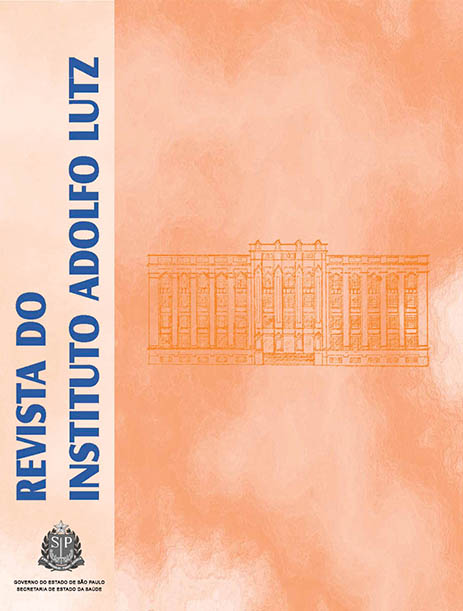Abstract
The determination of ascorbic acid (AA) contents in beverages is a challenging and necessary task because consumers have to know the exact amount of this component in the product as displayed on the container label. Moreover, the food industries have to add the exact (± 20%) quantity of ascorbic acid as it is stated on the label. This study aimed at evaluating 60 ready-to-drink beverages and powdered juices marketed in Curitiba (PR, Brazil). The results were compared with the values declared on the label, and in 76.7% of the samples no statistically similar values (p < 0.05) were found by comparing with those stated on the packaging label. Moreover, the AA values found in this analysis were from 12 to 90% lower than those reported by manufacturers. For that reason, the ascorbic acid contents in these products should be monitored by the National Health Surveillance Agency (ANVISA).References
1. Sahoo PK, Mukherjee SC. Immunomodulation by dietary vitamin C in healthy and aflatoxin B1-induced immunocompromised rohu (Labeo rohita). Comp. Immun. Microb. Infect. Dis. 2003;26(1):65-76.
2. Chao JCJ, Huang CH, Wu SJ, Yang SC, Chang NC, Shieh MJ, et al. Effects of β-carotene, vitamin C and E on antioxidant status in hyperlipidemic smokers. J Nutrit Biochem. 2002;13(7):427-34.
3. Frank J, Flaccus A, Schwarz C, Lambert C, Biesalski HK. Ascorbic acid suppresses cell death in rat DS-sarcoma cancer cells induced by 5-aminolevulinic acid-based photodynamic therapy. Free Radic Biol Med. 2006;40(5):827-36.
4. Davis MB, Austin J, Partridge D. Vitamin C: its chemistry and biochemistry. Cambridge: Royal Society of Chemistry; 1991.
5. Campos FM, Ribeiro SMR, Lucia CMD, Pinheiro-Sant’ana HM, Stringheta PC. Optimization of methodology to analyze ascorbic and dehydroascorbic acid in vegetables. Quím Nova. 2009;32(1):87-91.
6. Andrade RSG, Diniz MCT, Neves EA, Nóbrega JA. Determinação e distribuição de ácido ascórbico em três frutos tropicais. Eclet Quím. 2006;27(1):1-6.
7. Brasil. Portaria SVS/MS nº 31, de 13 de janeiro de 1998. Regulamento técnico referente a alimentos adicionados de nutrientes essenciais. Diário Oficial da União, Brasília, DF, 16 jan 1998.
8. Brasil. Ministério da Saúde. Secretaria Nacional de Vigilância Sanitária. Resolução RDC nº 269, de 22 de setembro de 2005: regulamento técnico sobre a ingestão diária recomendada (IDR) de proteína, vitaminas e minerais. Diário Oficial da União, Brasília, DF.
9. Instituto Adolfo Lutz. Normas Analíticas do Instituto Adolfo Lutz: métodos químicos e físicos para análise de alimentos. 4. ed. Brasília; 2005.
10. Suntornsuk L, Gritsanapun W, Nilkamhank S, Paochom A. Quantitation of vitamin C content in herbal juice using direct titration. J Pharmac Biomed Anal. 2002;28:849-55.
11. Quirós ARB, Fernández-Arias M, López-Hernández J. A screening method for the determination of ascorbic acid in fruit juices and soft drinks. Food Chem. 2009;116(2):509-12.
12. José AB, Souza JM, Lavinas FC. Avaliação do teor de ácido ascórbico e dos parâmetros físico-químicos de amostras de preparados sólidos para refresco, sabor limão. Saúde & Amb Ver. 2009;4(1):11-2.
13. Silva PT, Filho E, Lopes MLM, Valente-Mesquita VL. Sucos de laranja industrializados e preparados sólidos para refrescos: estabilidade química e físico-química. Ciênc Tecnol Aliment. 2005;25(3):597-602.
14. Abreu CRA, Pinheiro AM, Maia GA, Carvalho JM, Sousa PHM. Avaliação química e físico-química de bebidas de soja com frutas tropicais. Aliment Nutri. 2007;18(3):291-6.
15. Santos E, Batista E, Carvalho L, Salgado M, Souza P. Avaliação dos teores de vitamina c em néctares de manga. IX ENPPG / IX ENICIT / III SIMPIT. Instituto Federal de Educação, Ciência e Tecnologia do Ceará. Fortaleza, CE. 2009.
16. Yamashita F, Benassi MT, Tonzar AC, Moriya S, Fernandes JG. Produtos de acerola: estudo da estabilidade de vitamina C. Ciênc Tecnol Aliment. 2003;23(1):92-4.
17. Oliveira MEB, Bastos MSR, Feitosa T, Branco MAAC, Silva MGG. Avaliação de parâmetros de qualidade físico-químicos de polpas congeladas de acerola, cajá e caju. Ciênc Tecnol Aliment. 1999;19(3):326-32.
18. Lima VLAG, Mélo EA, Lima LS. Avaliação da qualidade de suco de laranja industrializado. Bol CEPPA. 2000;18(1):95-104.
19. Shaw PE, Nagy S, Rouseff RL. The shelf life of citrus products. In: Charalambous G. Shelf life studies of foods and beverages: chemical, biological, physical and nutricional aspects. Amsterdam: Elsevier; 1993.
20. Maia GA, Souza PHM, Santos GM, Silva DS, Fernandes AG, Prado GM. Efeito do processamento sobre componentes do suco de acerola. Ciênc Tecnol Aliment. 2007;27(1):130-4.
21. Freitas CAS, Maia GA, Costa JMC, Figueiredo RW, Sousa PHM, Fernandes AG. Estabilidade dos carotenoides, antocianinas e vitamina C presentes no suco tropical de acerola (Malpighia emarginata DC.) adoçado envasado pelos processos hot-fill e asséptico. Ciênc Agrotecnol. 2006;30(5):942-9.
22. Kabasakalis V, Siopidou D, Moshatou E. Ascorbic acid content of commercial fruit juices and its rate of loss upon storage. Food Chem. 2000;70(3):325-8.

This work is licensed under a Creative Commons Attribution 4.0 International License.
Copyright (c) 2012 Instituto Adolfo Lutz Journal
